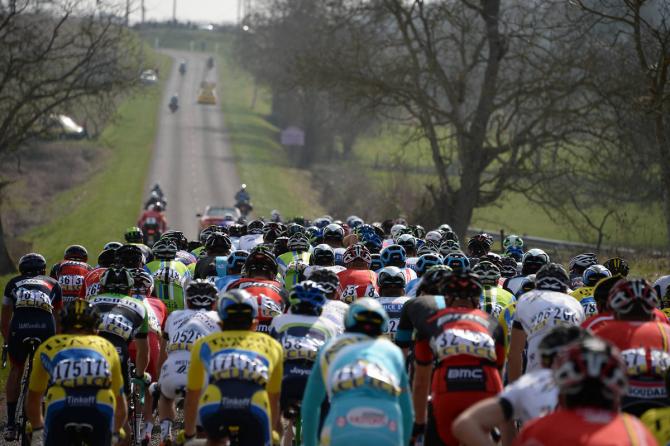UCI provides further detail regarding revamped WorldTour
Proposed reforms to begin in 2015, conclude in 2020

The UCI first unveiled its plans last fall regarding the re-structuring of road racing at the WorldTour level, and cycling's governing body has provided further insight into its vision for top-tier racing via a new newsletter, Reform, published this month.
"The reform of road cycling, our most popular discipline, is a flagship project for our sport as a whole and requires specific, targeted and sustained communication," wrote UCI Sport and Technical Director Philippe Chevallier in the newsletter's introduction. "Our aim is to provide an overview of the reform. It is essential that all members of the family of cycling are aware of how our sport will look in the future and what processes will be required to achieve this."
At the core of road cycling's reform at the highest level is the creation of a new two-tier First Division, with the top level (1A) comprised of 16 teams and 120 days of racing (including the Grand Tours, major stage races and Classics) plus a second level (1B) comprised of eight teams and 50 days of racing (yet to be specified).
The UCI revealed new information regarding the size of the First Division teams, as both the 1A and 1B squads will be capped at 22 riders maximum, with the longer term goal that each of these 24 teams also run their own development squads comprised of 8-10 riders.
The Second and Third Divisions will remain unchanged from the current structure, with the second division comprised of Pro Continental teams and the lowest division populated with Continental teams.
The newsletter described new UCI universal rankings relating to both individual riders as well as nations.
"The riders of the 16 1A teams, the 8 1B teams, UCI Professional Continental Teams and UCI Continental Teams will score points in their respective circuits (120 days racing on the 1A calendar; 50 days racing on the 1B calendar; UCI Continental Circuits) and on other circuits in which they are entitled to compete (in accordance with the rules of participation)," said the UCI. "A 'universal' individual ranking will be drawn up on this basis.
The latest race content, interviews, features, reviews and expert buying guides, direct to your inbox!
"The nation ranking, also covering all circuits, will be compiled from the individual ranking. These two rankings will faithfully reflect the hierarchy of global cycling and will improve interest in the media and among the general public."
There will be seven different team rankings, however, "drawn up on the basis of: the 120-day circuit (1A), the 50-day circuit (1B) and each of the five UCI Continental Circuits."
While the First Division with its 1A and 1B levels won't be implemented until the 2017 season, the UCI outlined the progressive steps taken in 2015 and 2016 to pave the way for the top level restructuring.
In 2015 and 2016 the 16 best teams on the UCI WorldTour rankings will receive UCI ProTeam status, while the two remaining positions will be determined by ProTeams, Pro Continental teams or new teams with the highest accumulated point totals from their five best riders on the WorldTour individual rankings.
2015 and 2016 will also see the introduction of the new aforementioned universal ranking system for individuals and nations.
In 2017 the 16 best teams from the 2016 WorldTour rankings will comprise the new Division 1A level, with the 17th and 18th-ranked teams slotted into the new Division 1B level along with other teams registered in this category.
2018 will see the introduction of the promotion/relegation system. "Each year the top team in Division 1B will be promoted to Division 1A, while the bottom team in Division 1A will be relegated to Division 1B," said the UCI. "Although the sporting criterion will be primary in deciding in which division a team is registered, ethical, financial, administrative and organisational criteria will also be determining factors."
The UCI expects that by 2020 the race calendars will be finalised and the new First Division will achieve full maturity.

